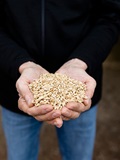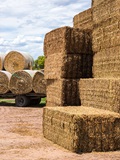Atherton Tableland
20 May 2020
| Date | AT 23 | AT 22 | AT 5YA |
|---|---|---|---|
| 06-Jan-23 | 350 | 290 | 330 |
| 13-Jan-23 | 350 | 290 | 330 |
| 20-Jan-23 | 350 | 290 | 330 |
| 27-Jan-23 | 350 | 290 | 330 |
| 03-Feb-23 | 350 | 290 | 330 |
| 10-Feb-23 | 350 | 290 | 330 |
| 17-Feb-23 | 350 | 290 | 321 |
| 24-Feb-23 | 350 | 290 | 311 |
| 03-Mar-23 | 350 | 290 | 311 |
| 10-Mar-23 | 350 | 290 | 311 |
| 17-Mar-23 | 350 | 350 | 323 |
| 24-Mar-23 | 350 | 350 | 323 |
| 31-Mar-23 | 350 | 350 | 323 |
| 07-Apr-23 | 350 | 350 | 318 |
| 14-Apr-23 | 350 | 350 | 313 |
| 21-Apr-23 | 350 | 350 | 309 |
| 28-Apr-23 | 350 | 350 | 309 |
| 05-May-23 | 350 | 350 | 309 |
| 12-May-23 | 350 | 350 | 309 |
| 19-May-23 | 350 | 350 | 309 |
| 26-May-23 | 350 | 350 | 309 |
| 02-Jun-23 | 350 | 350 | 309 |
| 09-Jun-23 | 350 | 350 | 309 |
| 16-Jun-23 | 350 | 350 | 313 |
| 23-Jun-23 | 350 | 350 | 316 |
| 30-Jun-23 | 350 | 350 | 316 |
| 07-Jul-23 | 350 | 350 | 316 |
| 14-Jul-23 | 350 | 350 | 316 |
| 21-Jul-23 | 350 | 350 | 316 |
| 28-Jul-23 | 350 | 350 | 323 |
| 04-Aug-23 | 350 | 350 | 330 |
| 11-Aug-23 | 350 | 350 | 330 |
| 18-Aug-23 | 375 | 350 | 330 |
| 25-Aug-23 | 400 | 350 | 331 |
| 01-Sep-23 | 400 | 350 | 333 |
| 08-Sep-23 | 350 | 337 | |
| 15-Sep-23 | 350 | 337 | |
| 22-Sep-23 | 350 | 339 | |
| 29-Sep-23 | 350 | 339 | |
| 06-Oct-23 | 350 | 334 | |
| 13-Oct-23 | 350 | 346 | |
| 20-Oct-23 | 350 | 346 | |
| 27-Oct-23 | 350 | 346 | |
| 03-Nov-23 | 350 | 346 | |
| 10-Nov-23 | 350 | 343 | |
| 17-Nov-23 | 350 | 345 | |
| 24-Nov-23 | 350 | 345 | |
| 01-Dec-23 | 350 | 345 | |
| 08-Dec-23 | 350 | 345 | |
| 15-Dec-23 | 350 | 345 | |
| 22-Dec-23 | 350 | 345 | |
| 29-Dec-23 | 350 | 345 |
Notes:
Change in price is the change since the last report. Hay quoted is sourced and delivered locally, GST exclusive unless stated otherwise. It should be noted that local prices quoted may not be the cheapest available, sourcing it from another region may be more affordable, and buyers are encouraged to evaluate all options. Prices are indicative to a mid-range shedded product, and based on the best indication of market value at the time of reporting. It should be noted there is a wide variation in quality of hay, prices for a mid-range product will not reflect the weighted average of trade. Prices will naturally vary based on the product quantity and quality, buyer/seller relationship and the size of the trade.The hay report has been commissioned by Dairy Australia to provide an independent and timely assessment of hay markets in each dairy region. This report is created using data provided by the Australian Fodder Industry Association (AFIA). It should be remembered that actual prices may vary for quality or other reasons. Whilst all reasonable steps have been taken to ensure the accuracy of the information contained in this report, Dairy Australia disclaims all liability to the fullest extent permitted by Australian law for any inadvertent errors and for any losses or damages stemming from reliance upon its content. Dairy Australia recommends all persons seek independent advice and, where appropriate, advice from a qualified advisor before making any decisions about changes to business strategy.
Commentary
- The harvest of peanut crops has been a key activity across the region with hay making and a range of other activities also being undertaken. It is busy time for growers taking advantage of the favourable, sunny weather.
- An increase in plantings of sugar cane has been seen. Due to expectations of continued high input costs and the need for a more steady and guaranteed return.
- Machinery repair costs, long delays to access replacement parts and high input prices will deter many producers from opportunistic hay production in the coming seasons due to lack of profitable return.
- For growers who recently harvested pasture for seed or hay, decisions are being made not to invest in fertiliser (at current prices between $3,000 to $4,000/acre while a drop in prices is expected but has not been passed on to producers yet) to produce a future crop of hay. Given currently low demand for hay, a high percentage of pastures will be left and used as a green manure mulch for the paddock.
- Fuel prices dropped slightly to $2.09/litre but are expected to rise again soon.
- Slow trade and low movement of fodder. Some increase in trade is expected as winter progresses.
- No change to pricing this week.
- Pasture (Rhodes Grass) hay: +/-0 ($300 to $400/t). Prices remain steady.
- Please note: Hay in the Atherton Tablelands is traditionally priced at $/bale, so it is important to check bale weights for conversion. The price range indicated is for feeds of varying quality with the price range generally indicative of quality of feed. We recommend feed testing and viewing of fodder before purchase to be sure of the quality of feed.

